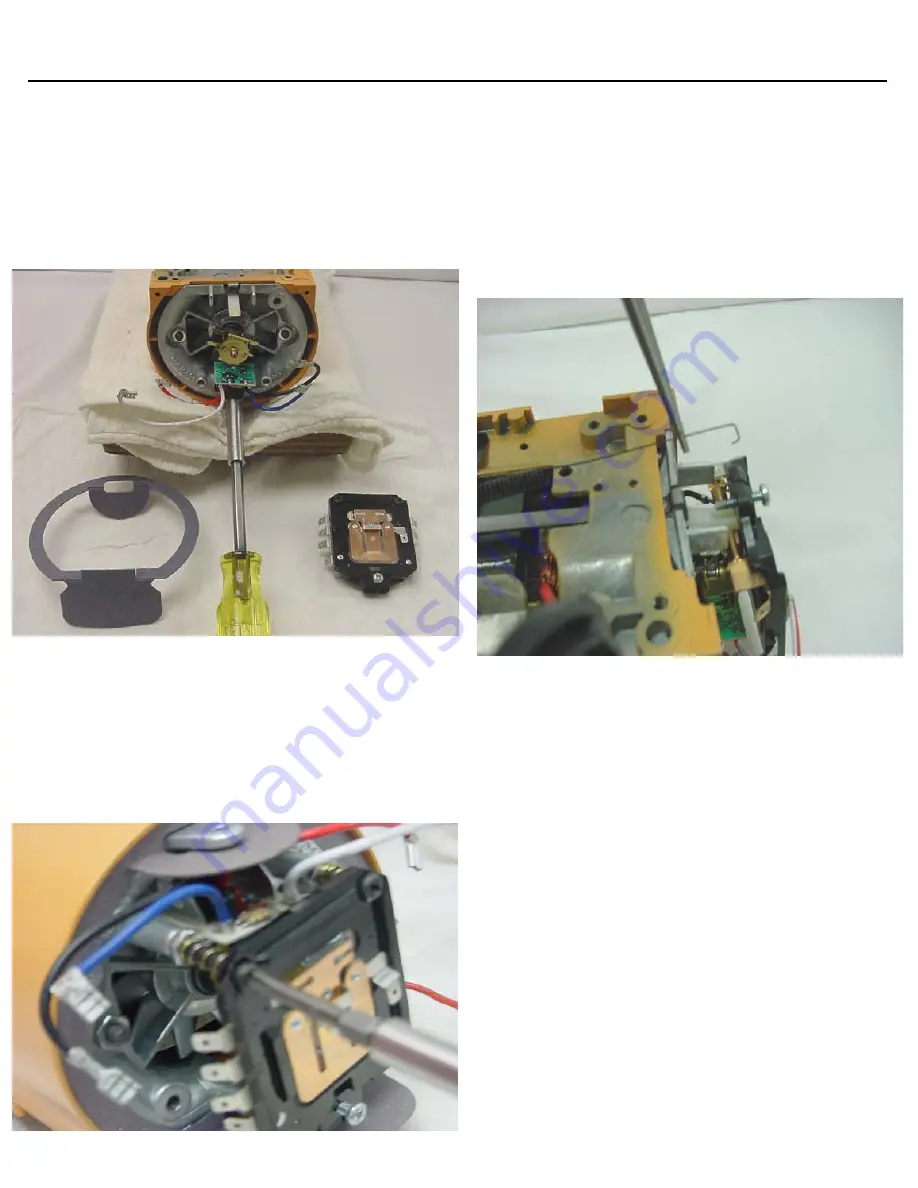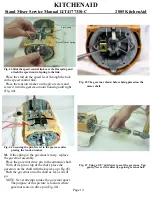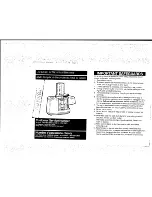
KITCHENAID
Stand Mixer Service Manual LIT4177310-C 2005 KitchenAid
N.
If the phase control was removed or has been
replaced, make sure the heat sink on the triac unit
has sufficient amount of thermal conductive
compound applied to that surface before assembly.
Place the #4-40x1/4” pan head screw through the
hole in the triac and screw it into the bearing bracket
(Fig. 48) until it is tight (4 - 5 in. lbs.).
Fig. 48 The triac is shown being secured to the bearing
bracket.
CAUTION:
Do not attach the phase control
excessively tight, as this pressure could deform the
heat sink, resulting in damage to the control.
O.
Place the control plate on the bearing bracket
with the adjusting screws at the top (Fig. 49).
Fig. 49 Placing the control board on the bearing bracket.
Turn in the screws until 3/8” of the screw
remains.
Have both screws turned in evenly so the opposite
end of the control plate rests squarely on the
extensions of the bearing bracket.
With long nose pliers, hook the control plate spring
into the hole on the bottom part of the control plate
(Fig. 50).
Fig. 50 The control plate spring being grasped with pliers
and positioning the hook into the hole at the bottom.
Place the end seal onto the mixer.
Connect the two flag terminals from the stator and
the four flag terminals from the phase control to the
control plate.
Refer to the wiring diagram for proper terminal
connections.
Be certain flag terminal connections to control
plate are tight.
If necessary, crimp the terminals with a needle
nose pliers.
Note: Leave the control unit. It is now ready for
timing, but a better job can be done when mixer is
completely reassembled.
Page 15
















































